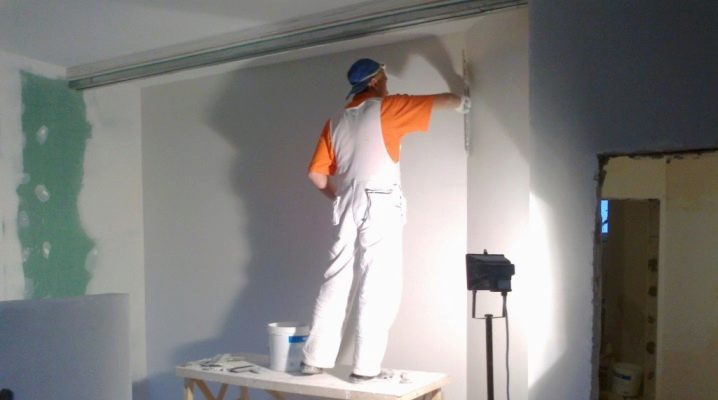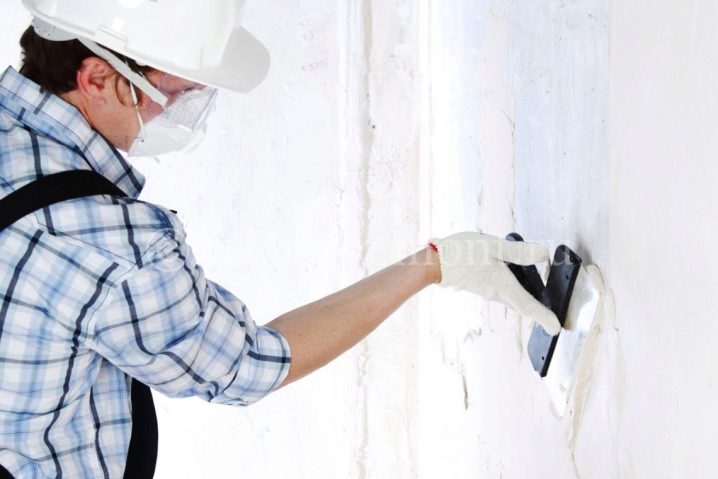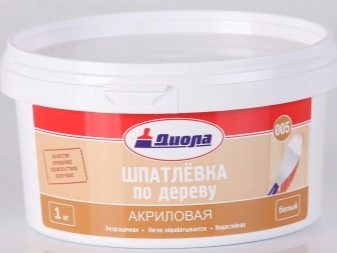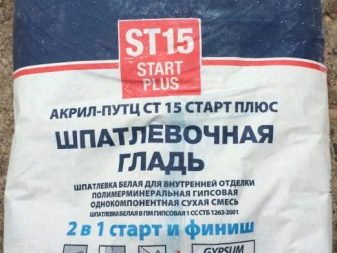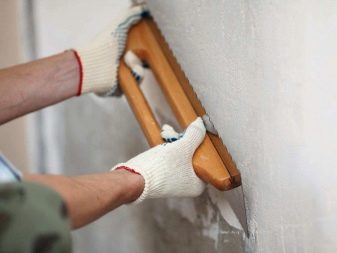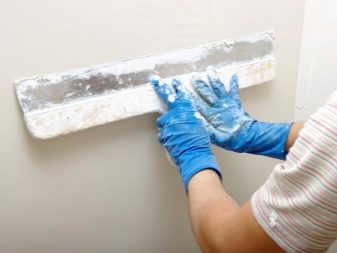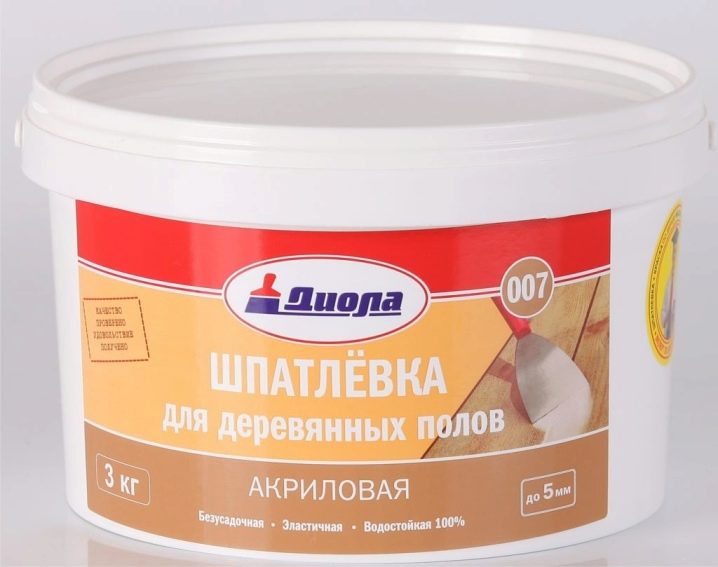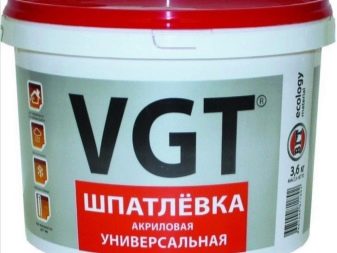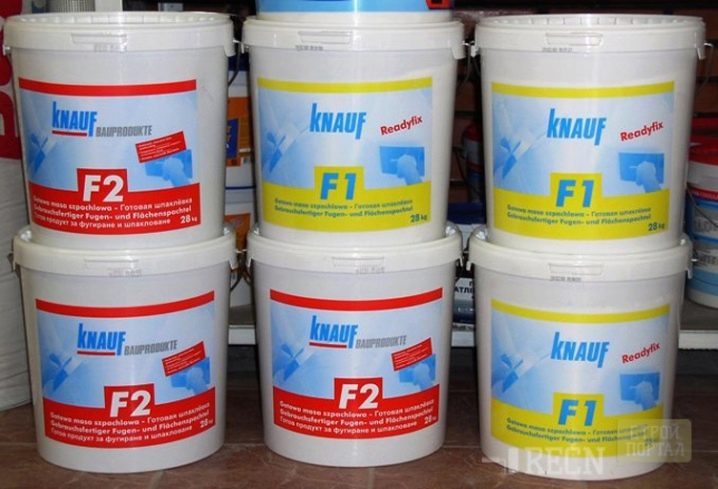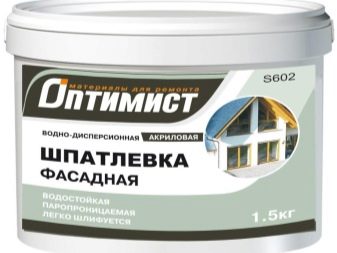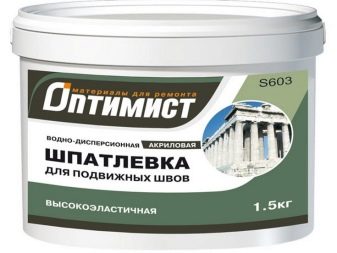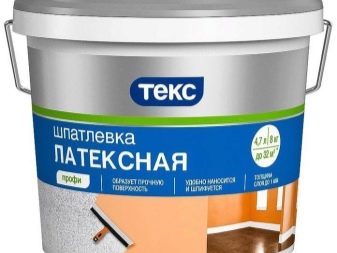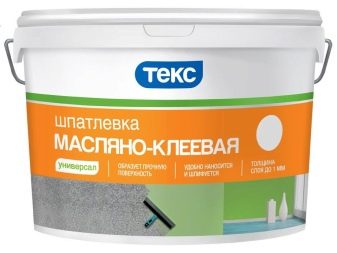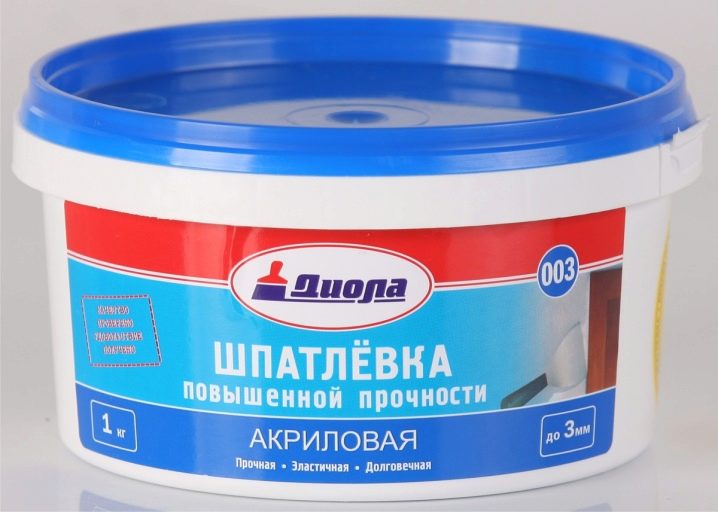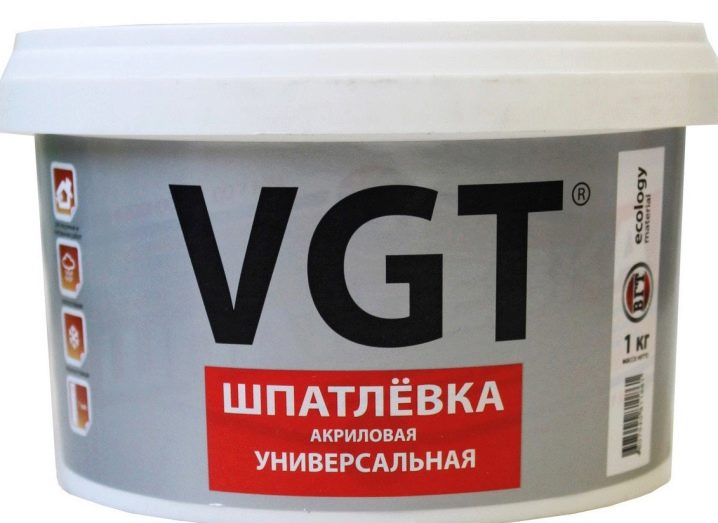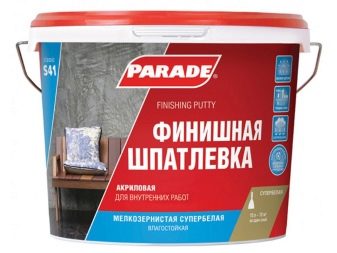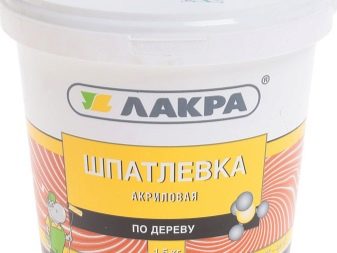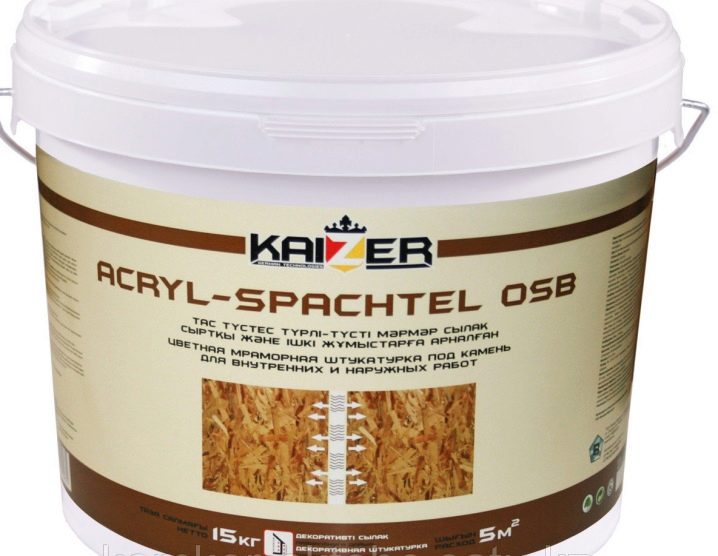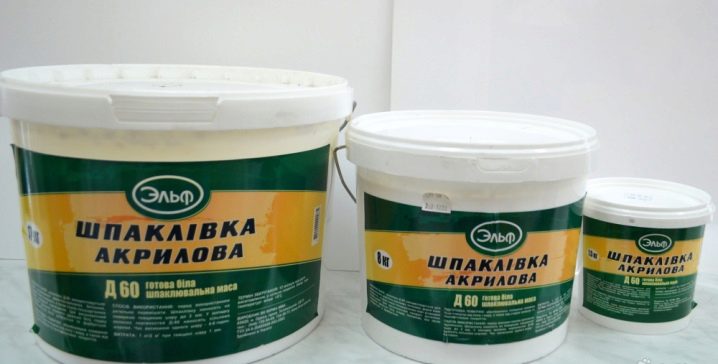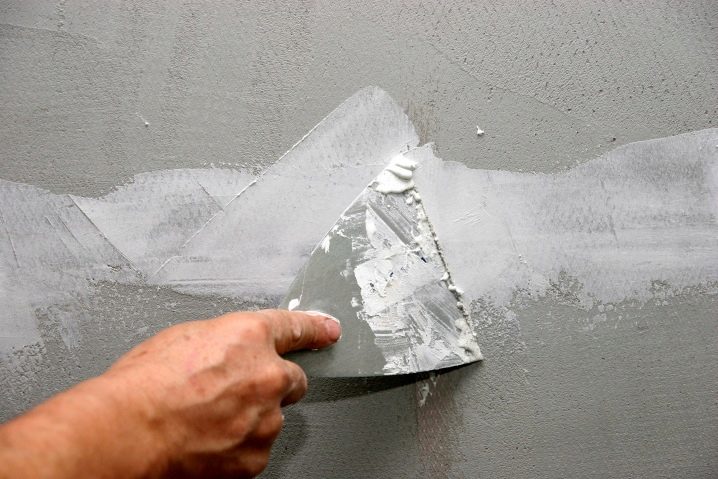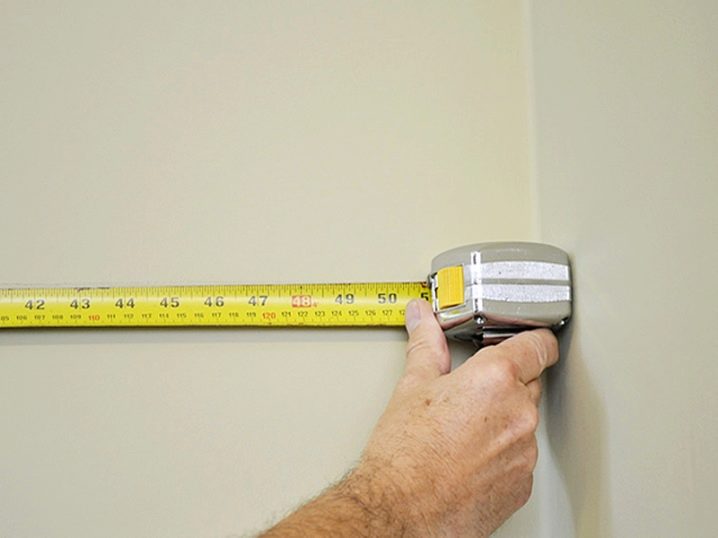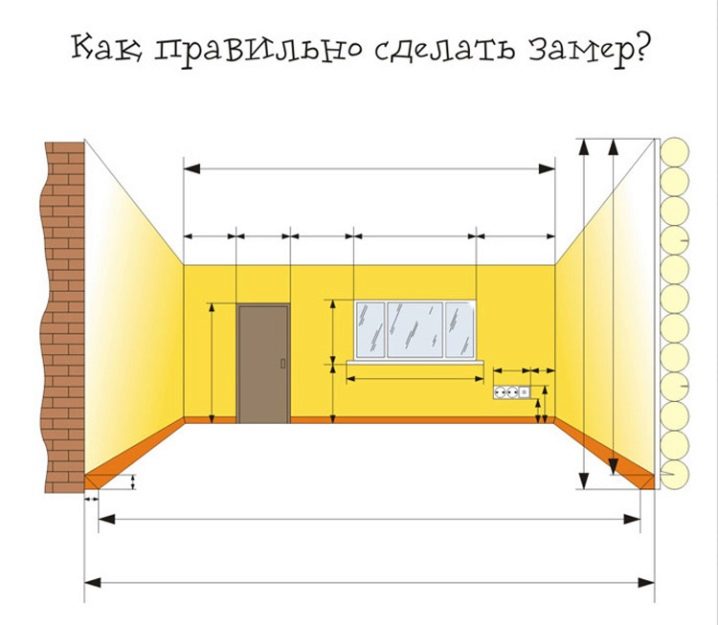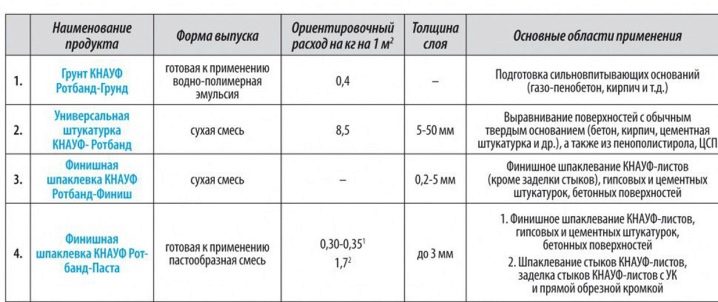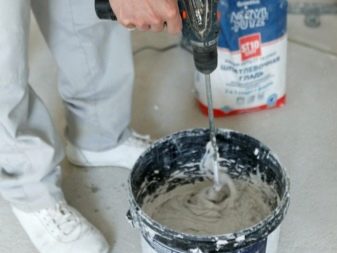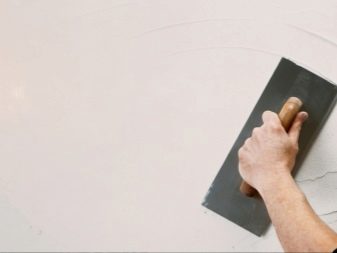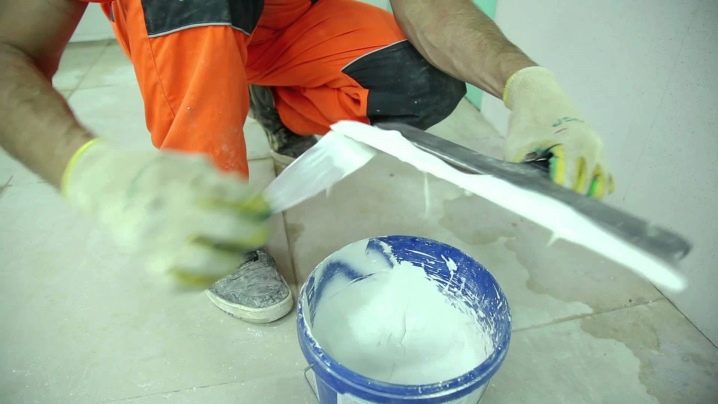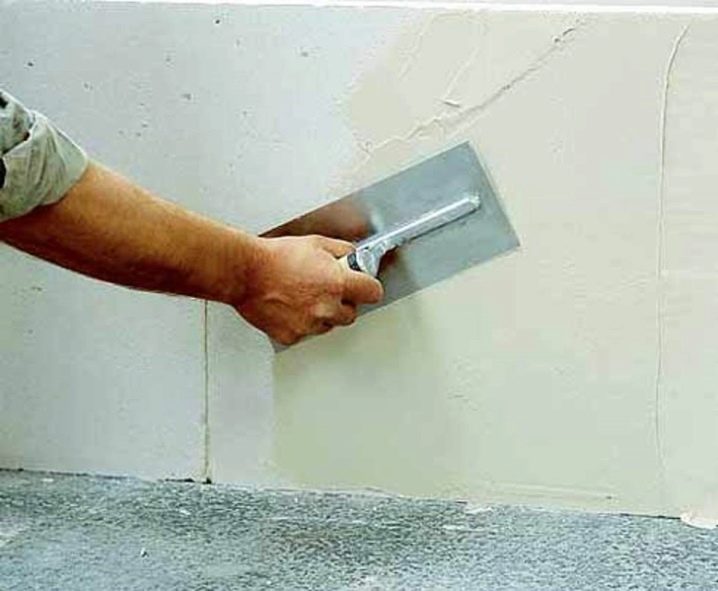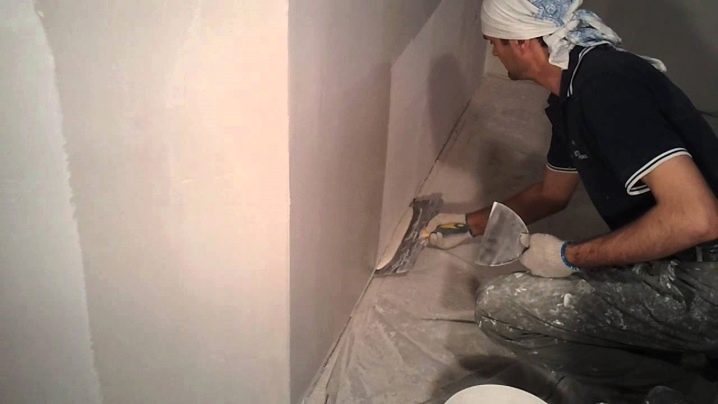Acrylic putty: selection criteria
Repair work almost always involves the use of plasters and plaster. Acrylic is quite in demand, the selection criteria for which and the basic properties will be discussed here.
Special features
The putty is made on the basis of acrylic polymers, has a high plasticity and elasticity. It has several varieties, it can be used for both internal and external works. There is a universal putty for this type, which is suitable for finishing work in an apartment, with external finishing of the facades of the house and window openings.
Sold in packages:
- in the form of a granular mixture that needs to be diluted with water before use;
- in ready to use form.
Acrylic putty is used as a topcoat for monolithic leveling of walls or ceilings, to seal small voids, tesches of various sizes. It well withstands sudden changes in temperature, is highly resistant to moisture, plasticity, has a low vapor permeability.
In work, it is very light, evenly distributed over the surface, has no unpleasant odor, dries quickly. You can consistently apply several thin layers on top of each other, which allows you to get a perfectly flat and smooth surface. After drying, the polymer coating does not crack, does not shrink, does not erode when applied waterborne paints. Amenable to staining and processing varnishes of almost all kinds.
Disadvantages:
- some species create shrinkage over cracks over a layer of more than 7 mm; therefore, for thick layers, puttying is carried out in two or three stages — first they create a rough layer and then several finishing layers;
- poisonous dust appears during grinding, therefore protection methods for the eyes and the respiratory tract are required.
- fine dispersion is ideal for forming a smooth surface, but it creates big problems during sanding, quickly clogging sandpaper.
The classic color choices are white and gray. There were textural options that mimic different types of textures, for example, wood.
The composition can be applied to the surface:
- concrete;
- brick;
- metal;
- already plastered surfaces;
- wood (furniture, doors, floor, panels, ceiling);
- drywall, fiberboard, particleboard;
- old paint coatings, non-absorbent layers of glossy paints;
- glass-magnesium surfaces;
- fiber cement boards, gypsum.
This makes acrylic putty a truly versatile polymeric finishing material.
Types and composition
Despite similar technical characteristics, differences in composition make all types of acrylic putty individual.
- Water dispersion on acrylic base - in the sale comes in a ready-to-use form. It consists of: water, acrylic base, dry filler. It is used for priming, plastering walls and facades. Suitable for use on any surface.Moisture resistant, suitable for finishing work in rooms with high humidity.
- Oily - also sold in finished form. It differs from the usual acrylic putty richer composition and wide scope of application. The main ingredients are linseed oil, acrylate, water, hardener, filler, plasticizer, dye pigments. It has excellent specifications. Depending on the manufacturer, it can be waterproof, fireproof, anti-corrosion.
- Latex - has a wide range of applications. There are several varieties: basic, finishing and intermediate. Latex putty has a very good thermal conductivity, so it is often used for interior decoration from the inside. It includes silicone, acrylic base, water, hardeners, coloring agents.
- Acrylate - can be used inside and outside buildings, ideal for sealing joints between drywall panels. Consists of acrylic base, water, hardener and thickener. Implemented both in dry and in finished form. It has excellent quality characteristics, can be frost-resistant and with increased moisture resistance.
Manufacturers
Acrylic putty of all varieties is presented on the shelves of shops in a wide range under the brand of various brands. Not to get lost in such an abundance of sentences is quite difficult, especially for an ignorant person. A brief overview of the most famous manufacturers will allow you to quickly navigate in the store and make the right choice:
- VGT - a domestic manufacturer specializing in the manufacture of universal acrylic putty, also narrow-profile, for specific conditions. The range includes ready-to-use solutions that can be used to finish almost any surface. Acrylic topcoat from this manufacturer cannot be used in conditions of high humidity.
- PARADE - offers three types of acrylic compositions: standard finishing coating, moisture-resistant, exclusive putty for working with wooden surfaces. All types of finishing materials are sold at an affordable price, have excellent quality characteristics, cost-effective in consumption.
- LLC Stroytorg + - is engaged in the manufacture and sale of plaster called "Lacra".This is a universal high quality acrylic putty. It has unique technical characteristics and long shelf life. Perfectly proved at seal of seams, including with use of the reinforcing grids. Implemented in almost every hardware store and at an affordable price.
- World famous Kaizer brand, puts on sale a topcoat called Acryl-Spachtel OSB. For its manufacture, it uses only benign and modern ingredients, the production process is carried out on modern equipment, which allows you to create high-quality and versatile putty to perform finishing work of any kind.
Each of these manufacturers is constantly expanding the range of finished finishing materials.
Tips for choosing
The right choice of the most suitable acrylic putty for work is the main guarantee of excellent and quick execution of all finishing activities.
It is very important to use the advice of experienced masters:
- If the putty will be applied to another coating, such as a primer, then you should choose these two products from the same manufacturer.
- Be sure to read the recommendations on the packaging on the conditions and scope of use of acrylic plaster. Violation of the recommendations will lead to disastrous results.
- If after applying the putty the walls will be painted, then it is better to give preference to ready-to-use solutions. Under the wallpaper, the best choice would be dry mixes.
- When purchasing a product, even from a well-known manufacturer, you need to open the lid and visually assess the contents of the container. There should not be any large extra blotches or odors in the mixture.
- If the putty is to be used in conditions of high humidity, then the package should contain information on the permissibility of such an application. Otherwise, you will find a natural alteration.
- It is necessary to take into account the purpose of the finishing coating: for use inside the building or facade works. If you need two types of putty, it is better not to acquire two types, but to buy one - universal.
- It is worth buying a product in which recommendations for use are as close as possible to the operating standards of your premises.
- It is better to give preference to acrylic putty known manufacturers.
Compliance with these simple tips will help you to choose truly quality products as quickly and easily as possible.
How to putty?
Before you begin finishing work, you must prepare the room, purchase the necessary materials. Before buying, you should calculate the consumption of the mixture, which is needed for repair.
Consumption
To begin with, the volume of putty mixture is calculated per 1 sq. Km. The resulting value is multiplied by the area of the entire surface allotted for alignment. The result will vary depending on how many layers of putty will be applied on 1m2 and on which working surface.
So the foam can be puttied with a smaller amount of plaster than is required to level the concrete floor. It is necessary to take into account the type of putty, as the facade is consumed faster than universal or intended for interior work.
There are average consumption rates of acrylic putty. For plastering a concrete floor, an average of 60 kg of mixture per 100 square meters is required. m. For finishing work on the facade - already about 70 kg per tighter area. The lowest consumption when finishing the ceiling inside the room is about 45 kg per 1 sq. m
The amount of consumption is also affected by the defects in the working surface, their number, the amount of work to be done and the correctly chosen putty based on acrylic polymers.
Application technology
It is necessary to begin with preparation. Putty should be diluted with water in accordance with the instructions, ready - mix thoroughly. Free the surface of the working area from dust, dirt, debris and residues of past paint. If necessary, pre-apply the primer and only after it dries, you can begin to level the walls.
Putty putty should be a special trowel of medium size. It is better to use a small amount of the mixture at one time, adding a new batch to it if necessary. With the help of the rules should be adjusted to the same thickness in different parts of it.
After applying the first base layer, the work area needs rest. It dries for about a day. After this time, the entire zashpaklevannaya surface rubbed with a soft roller or a special grater. If, after grouting, there are still slight defects on it, one more, but thinner layer of acrylic plaster should be applied, wait for drying again and wipe the surface again.
If the defects on the working surface are too large, then before using the putty it is better to additionally use not only the primer, but also the plaster. So the solution consumption will be reduced, and the working surface itself will be better prepared.
Acrylic putty of all kinds is a simple and easy-to-work finishing material. It does not require any special skills and tools. All that is needed is to consistently and slowly carry out all stages of work.
Reviews
Acrylic putty has received wide recognition from both professional builders and ordinary citizens, who with its help make repairs in their homes.
Experienced craftsmen say that plaster really is of high quality, very economical, can be used to work with almost any surface and in almost any conditions. The big plus, according to them, is the fact that the surface, plastered with an acrylic mixture, can later be covered with virtually any finishing compound.
Ordinary buyers note the simplicity and ease of use of acrylic plaster, as well as an excellent end result.A big plus for many is the wide range of this finishing polymer finishing coating. This makes it possible to purchase a putty that fully satisfies all requirements.
All about finishing acrylic putty Triora look in the following video.
